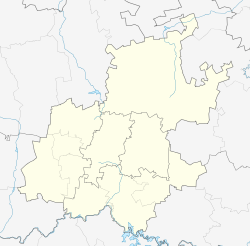Bertrams | |
|---|---|
| Coordinates: 26°11′34″S28°3′58″E / 26.19278°S 28.06611°E | |
| Country | South Africa |
| Province | Gauteng |
| Municipality | City of Johannesburg |
| Main Place | Johannesburg |
| Established | 1889 |
| Area | |
• Total | 0.39 km2 (0.15 sq mi) |
| Population (2011) [1] | |
• Total | 3,906 |
| • Density | 10,000/km2 (26,000/sq mi) |
| Racial makeup (2011) | |
| • Black African | 77.1% |
| • Coloured | 7.6% |
| • Indian/Asian | 3.4% |
| • White | 10.7% |
| • Other | 1.3% |
| First languages (2011) | |
| • Zulu | 21.3% |
| • English | 16.9% |
| • Afrikaans | 11.4% |
| • Southern Ndebele | 7.5% |
| • Other | 42.9% |
| Time zone | UTC+2 (SAST) |
| Postal code (street) | 2094 |
Bertrams is a suburb of Johannesburg, South Africa. It is a small suburb found on the eastern edge of the Johannesburg central business district (CBD), tucked between the suburbs of New Doornfontein and Lorentzville, with Troyeville to the south. It is located in Region F of the City of Johannesburg Metropolitan Municipality.

